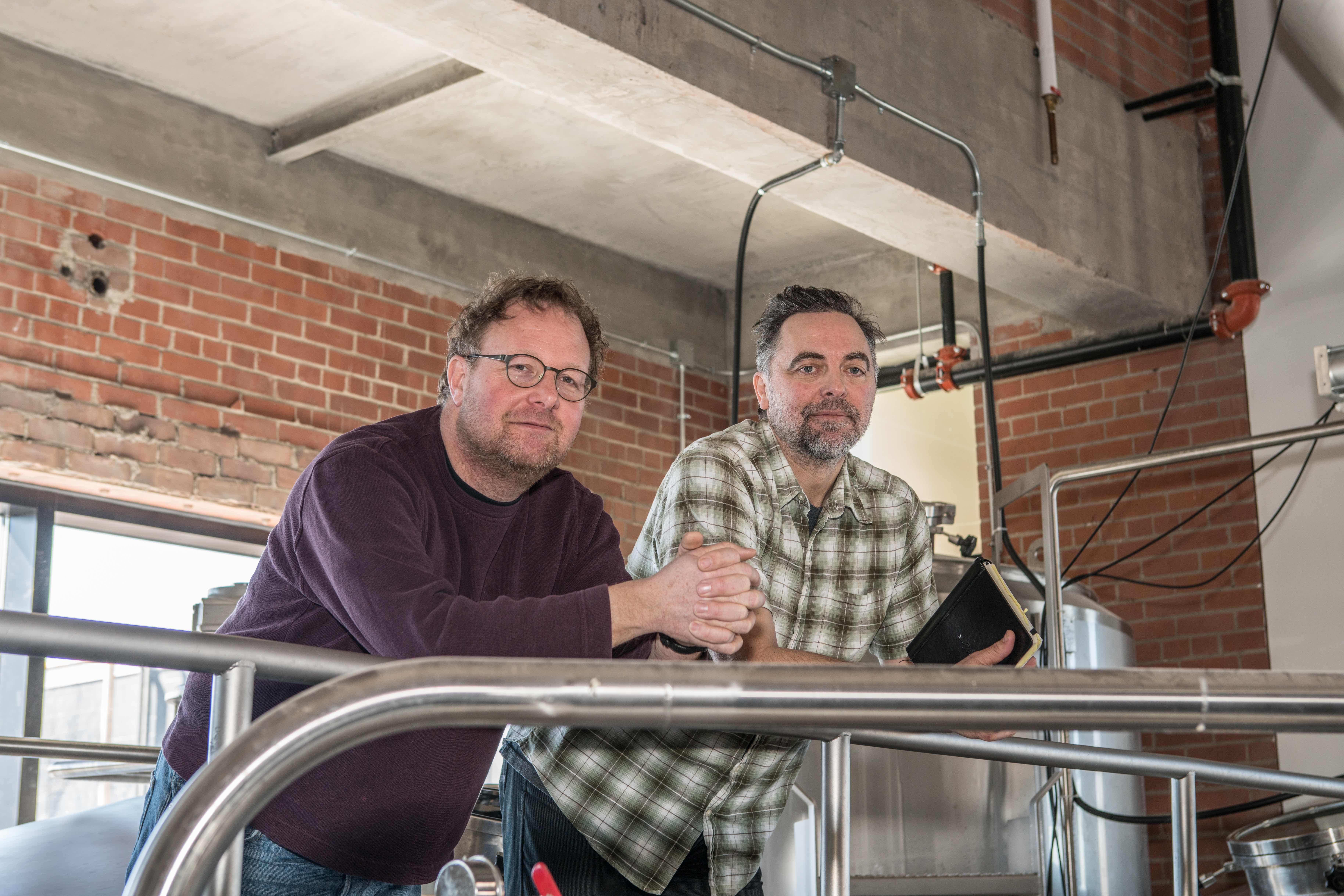
Sleeping again. I’m looking forward to sleeping again.”
Tom Paterson is looking forward to getting a full night’s rest and….dare he say it, relax. Because for Paterson, seven years after he founded Junction Craft Brewing with Doug Pengelly, the duo have finally got somewhere they can truly call home.
Oh, and a decent-sized patio where they can now serve drinkers without the assembled crowds encroaching into public space….
Junction Craft Brewing has just moved into its new site. The team have ten brews under their belt and they packaged two of them in their new home that is lovingly known locally as The Destructor. The Symes Road site in Toronto was originally built in the early 1930s under the guidance of RC Harris, Toronto’s longest serving Commissioner of Public Works. It was originally a rubbish incinerator, but it’s a building that was clearly created with care and attention. And it’s something the team at Junction are keen to show off in its new guise as a destination brewery.
But rewind some seven or so years and the Junction Craft Brewing story was just getting started. Paterson had recently restored The Paddock Tavern, a former juke joint at 178 Bathurst St, to its former glory.
A fan of good beer, he wanted the Toronto landmark to serve local craft brews. At that time, Doug Pengelly was running a one-man local brewery that was making a name for itself thanks to well-made, quality beers. And as Paterson and Pengelly increasingly talked beer on delivery days, the wheels of the vehicle that would become Junction Craft Brewing started turning.
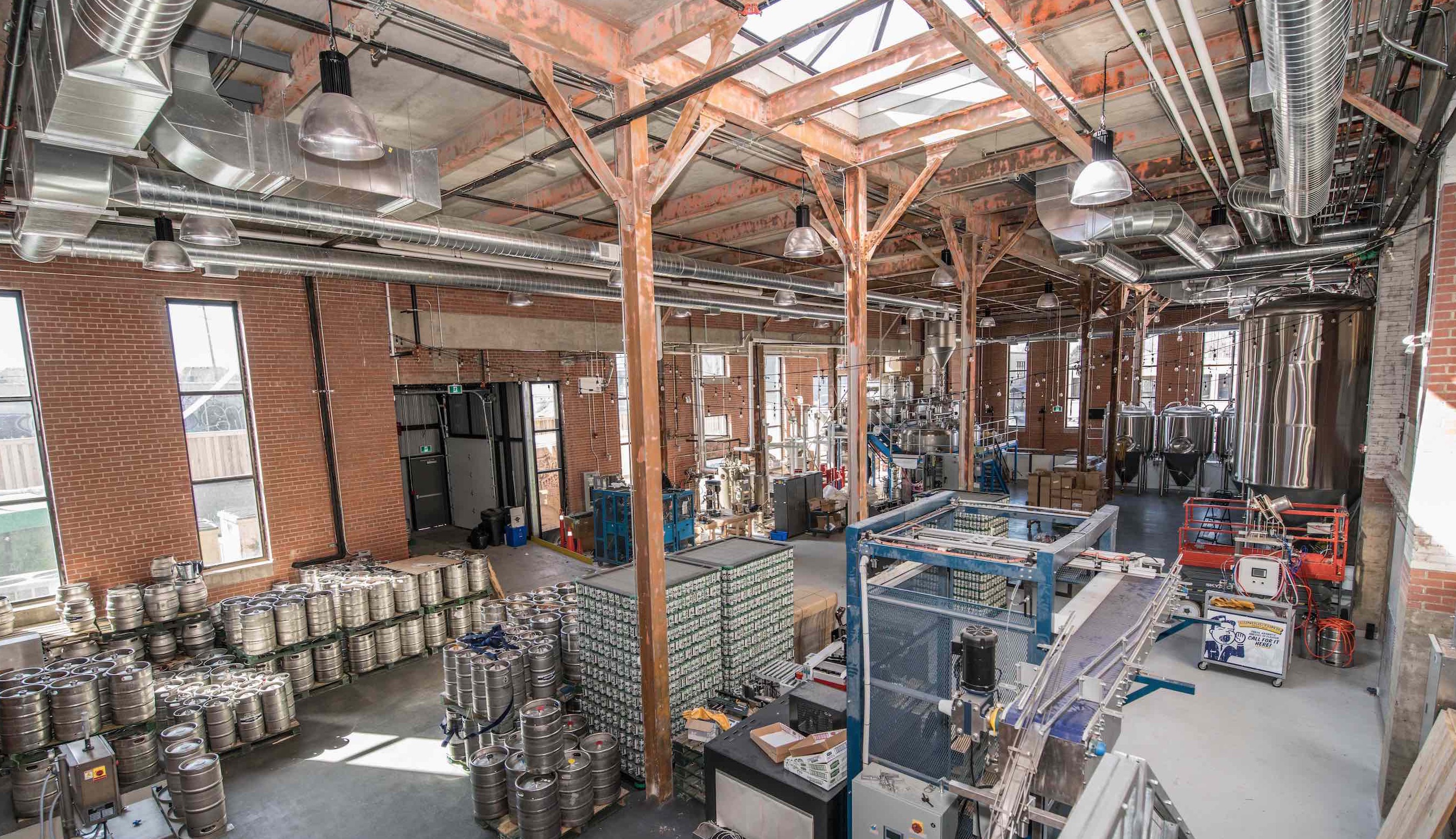
The brewery officially launched in 2011, with the team’s first beer, a 5.3% beer light amber in colour called Conductor’s Craft Ale, being brewed and kegged at Wellington Brewery in Guelph, Ontario.
Drinkers took to the beer and within a year, Conductor’s was served on tap at 50 spots in Toronto’s west end so towards the end of the following year, Paterson and Pengelly took the decision to build its first brewery Cawthra Avenue in Toronto’s Junction neighbourhood and right across from the rail tracks.
“Like the little engine that could, our first operation was a small, efficient sparkplug of a brewery. On the outside, we were considered a commercial brewhouse,” says Paterson. “In our hearts and minds, this was a phase for piloting, experimenting and shaping our identity. Our 3 hL brewhouse gave us the space to develop the recipes that have given us our reputation for variety.”
He adds: “In the first full year of nanobrewery operation, we made 230 brews with over 90 unique recipes. We saw how licensees were responding to their customers’ growing taste for diversity in craft beer. More pubs and restaurants were establishing rotating draught lines to keep their offerings fresh and unique.
“We met that demand, because Junction’s dedication to diversity allows us to do things other breweries simply can’t. In 2014, we made 441 brews. In 2016, we added more tank capacity and brewed 599 small batches. At the same time, we continued the contract brewing of Conductor’s Craft Ale as sales escalated.”
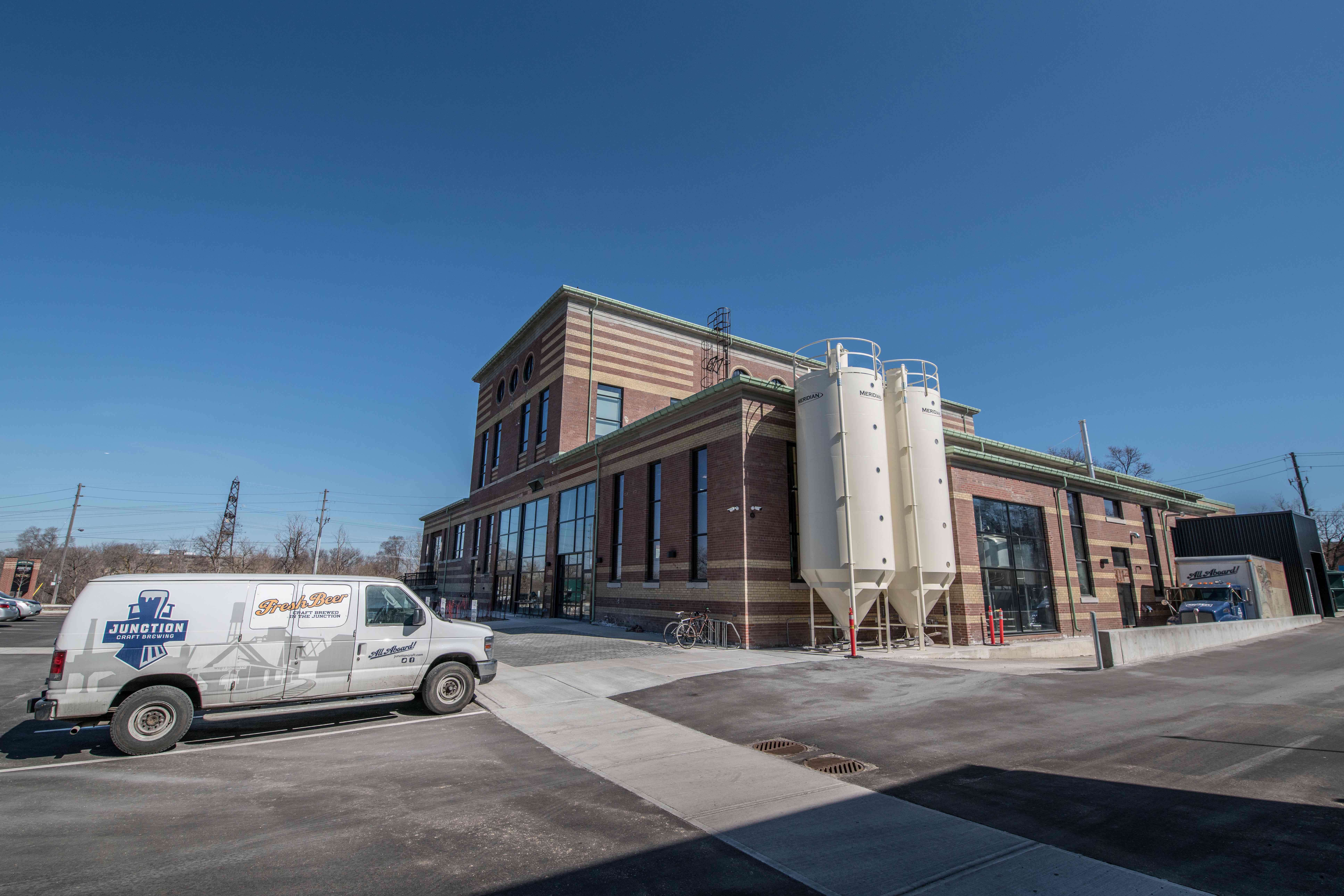
The team also enjoyed success as its offering grew steadily within the LCBO network. The launch of 473 mL cans of Conductor’s Craft Ale in June 2013 was followed a year later with its second core beer, Brakeman’s Session Ale. And last year, Engineer’s IPA joined the lineup, swiftly complemented by the Trainspotter Craft Lager launched in May 2017.
But selling beer to more than 150 licensees and a burgeoning range that includes Stationmaster’s Stout, Junction Road Black Lager, West Toronto Weizen, and Trainspotter Craft Lager, it became an inevitability that a move was on the cards. It was only so long a 3hl brewhouse and a contract brewing arrangement could sustain the engine room of Junction Craft Brewing.
And that led the team to 150 Symes Road.
“Harris believed that civic architecture should be a source of community pride, and the classic Art Deco building certainly reflects this,” says Paterson.
Pengelly commissioned Quebec’s IAI to produce its new custom-built 25hl brewhouse. Originally the plan was to hold on to its original kit but an opportunity arose to sell it on so the duo made the decision.
“We opted for IAI as they are great at what they do. They’re not your standard brewhouse manufacturer and don’t generally do them but Doug had lots of specifications on what he wanted the new system to be,” says Paterson. “Other manufacturers will offer you a system and tell you that’s how it should work, but IAI allowed us to customise it to our own requirements.”
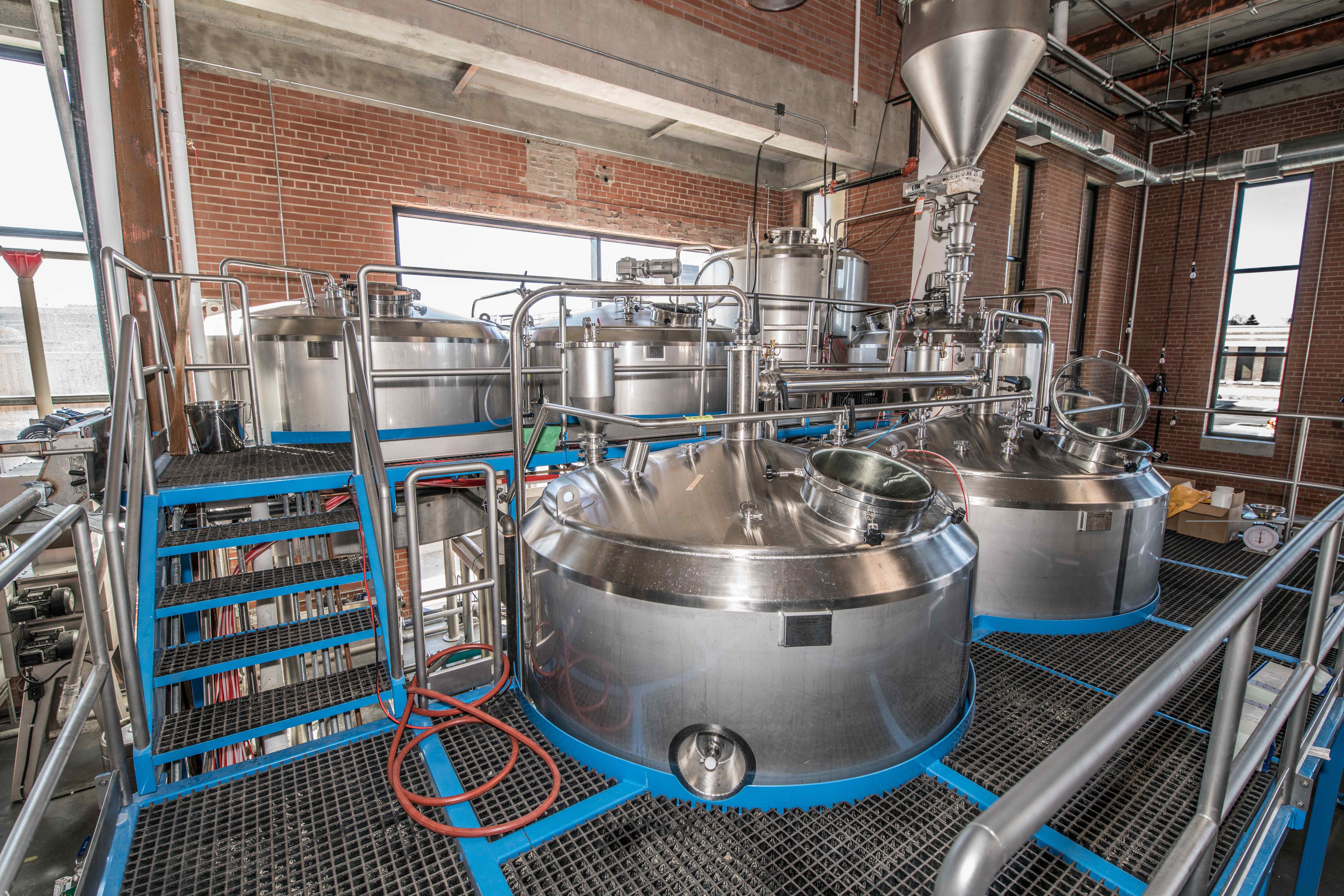
The brewhouse, along with fermenting capacity will up Junction’s annual production capabilities from 2000hl to at least 12,000hl to start. Part of this jump comes from bringing back the volume contracted to Wellington in-house for the first time. Kegging, canning and bottling will also be handled under one roof as well the option for other fledgling breweries to have their beers produced on the new kit.
In addition to a fully-fledged events space that will be utilised for occasions such as Oktoberfest parties , Paterson is enthused by the opportunity to draw upon his expertise in the restaurant trade and invite some of the best dining spots to take residence at Junction on a rotating basis.
“Food is something we haven’t really pursued before and that was an active decision. It was nice to get away from the food trade for a time but in this day and age, good food is such an important part of the brewery experience and we want it to be a big part of what we do, too,” he says. “But we didn’t want to do standard pub food either. We’ve developed lots of great relationships with the restaurants that sell our beer so it makes sense to collaborate and have them take over the kitchen. The food offering can rotate just like the beers we offer and it’ll give people a reason to come back time and time again.”
Being part of the community is something that is incredibly important to Paterson and Pengelly. They’ve seen the Ontario brewing scene grow from around 80 or so breweries in operation when they started out to more than 250 in 2018. And when it came to making the site move, the duo were adamant they were staying local.
“We’re literally only five minutes away from our previous site. I’m not a fan of associating your brand with an industry or an area and then disconnecting yourself from that will still trading on the name,” he says. “The junction is of such historical importance and we wanted to do our bit to keep that tradition.”
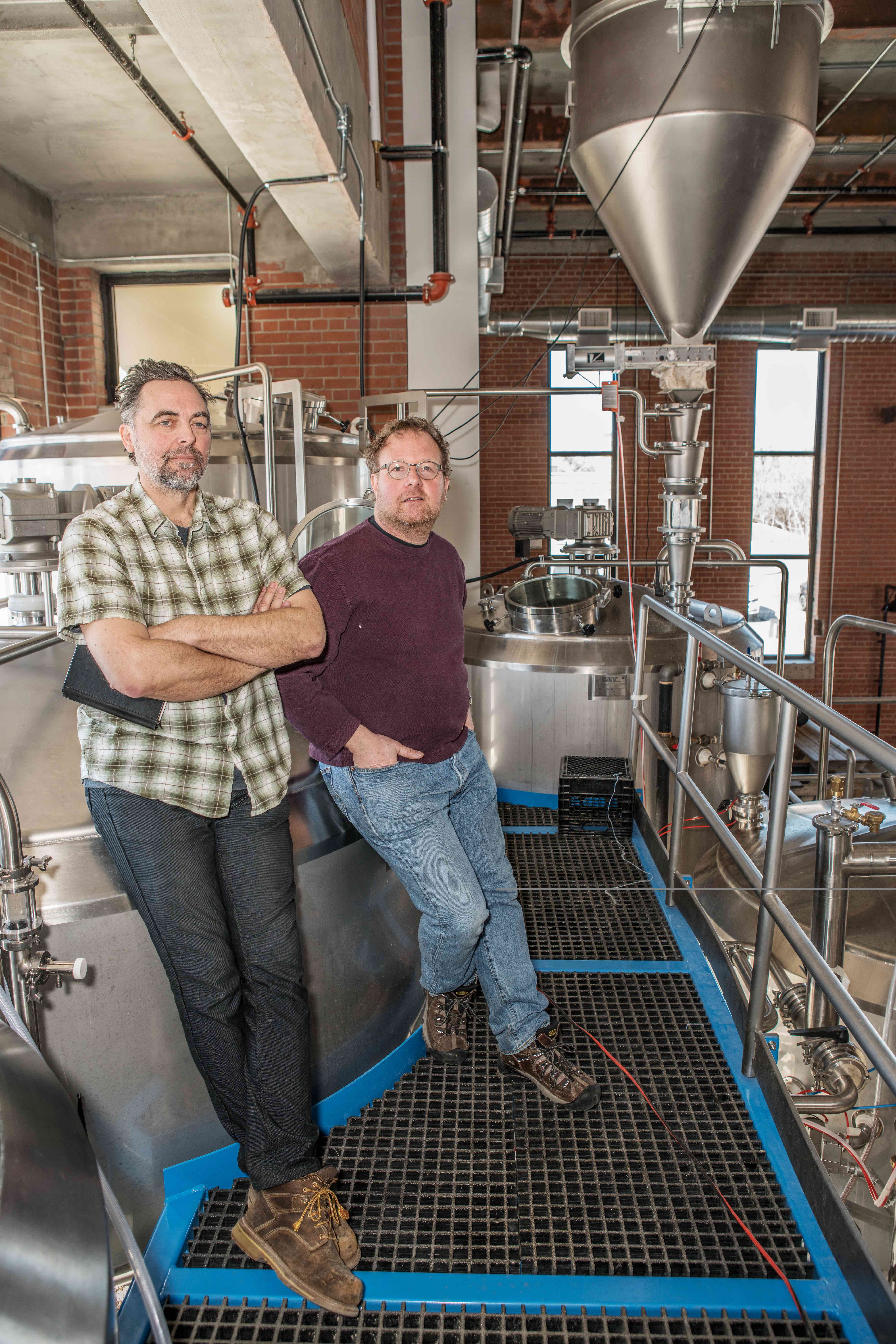
The sense of history and heritage is alive and well at Junction Craft Brewing, from the building it inhabits to the area it calls home. But the duo, ably assisted by they team of 25, are now only looking forward.
“It feels like the last seven years were all about experimentation. It was a playing ground to see what worked and what didn’t. So to be here in 2018, making a living from what we do feels like an amazing feat,” says Paterson. “However, we want to grow more locally and elsewhere in Ontario and beyond, too. The beer scene is great, it’s in a good place at the moment and I’m very happy to be part of it.”
He adds: “Previously we’ve said it’s all about the journey, not the destination. But at this point, I’m pretty much done with the journey and I’m more than happy to arrive at the destination. I’m ready to get down to work.”
